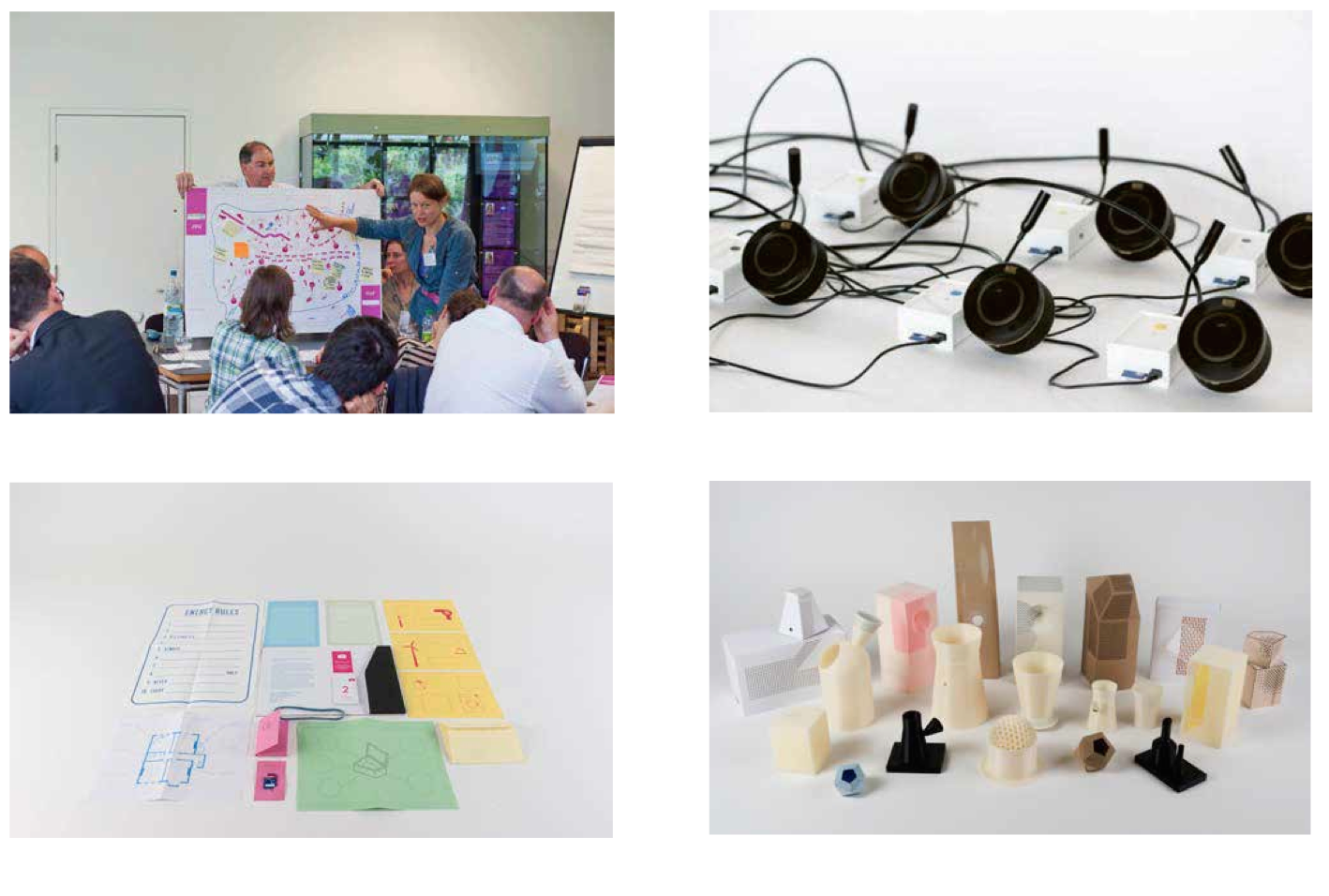A wide range of pen possibilities here, found in a French convenience store. The form is the same, the affordance too, but the behavior's different. The dual pen (paper + capacitive screen) sits in the center, more expensive than the others, with a colorful look discreetly showing its edgy character.
object
"ethical things": crowdsourcing and networked objects
"Ethical Things" by Matthieu Cherubini and Simone Rebaudengo is a fascinating exploration of autonomous systems and "smart" objects:
"The 'Ethical Things' project looks at how an object, facing everyday ethical dilemmas, can keep a dose of humanity in its final decision while staying flexible enough to accommodate various ethical beliefs.In order to achieve that, our "ethical fan" connects to a crowd-sourcing website every time it faces an ethical dilemma. It posts the dilemma it's facing and awaits the help of one of the "workers", or mechanical turks, who will tell the fan how to behave. Thus, it assures that the decision executed by the system is the fruit of real human moral reasoning. Moreover, the fan is designed to let the user set various traits (such as religion, degree, sex, and age) as criterion to choose the worker who should respond to the dilemma, in order to assure that a part of the user's culture and belief system is in line with the worker, or ethical agent.(Should it be a middle-aged Muslim male with a PhD or a young Atheist female?)"
Why do I blog this? This is a curious investigation mundane and insignificant objects of our everyday lives. It's a good example of a human/non-human collaboration flux based on the articulation of networked objects and crowdsourcing.
Objects from Japan
Spent last week in Tokyo for a workshop. A good opportunity to wander around and run across objects that I found typically from there. A short list, it's definitely a selection, can't be exhaustive.
My favorite, it's pervasive and fascinating. A plastic weight with an handle used to stabilize different things here and there in the City.
Most of the people I've seen used this model of umbrella. They sometimes leaves it in different places.
Umbrellas a pervasive but hats are important too. This one's in a university office, just in case an earthquake appears.
Towels need to be warmed, don't they?
I'm not entirely sure about it but it feels like it's meant to protect the brand new metro ticket you buy at the counter. Lovely design.
The conspicuous vending machines and their touch/SUICA-enabled interface.
This category deserves a whole blogpost/book/encyclopedia. Ah, game controllers.
The frog-like bins are intriguing too.
Why do I blog this? Material culture is fascinating to observe. The design of all these objects is interesting and highlight the way mundane activities are conducted. Such artefacts reflect needs and correspond to expectations or situations... and can act as potential stimuli in workshop/research to show alternative to how things are done/made elsewhere.
A series of figures presented in the NORDES paper about Energy Bubble.
Energy Babble: networked radio broadcasting internet content
Matthew Plummer-Fernandez – who leads a workshop at ECAL this week for the IIClouds project – pointed me to this intriguing project he was part of, with fellow colleagues at Goldsmith (Tobie Kerridge, Liliana Ovale, and Alex Wilkie). It's called "Energy Babble" (see the paper published at the Nordic Design Research Conference 2013). It's a networked radio appliance drawing content from online sources:
"Synthesised speech files are published from a server for immediate playback by the devices. These sound files are derived from texts from a range of sources, including twitter accounts and policy and activist news publishers. Speech files are also algorithmically generated by the system drawing on historic utterances, also triggered by energy events, and taken from user contributions via the devices’ microphones."
Why do I blog this? Matthew's currently leading a workshop about "botcaves", the hardware required to run bots. He mentioned this project that I find interesting as a way to materialize the aggregation of digital content.











